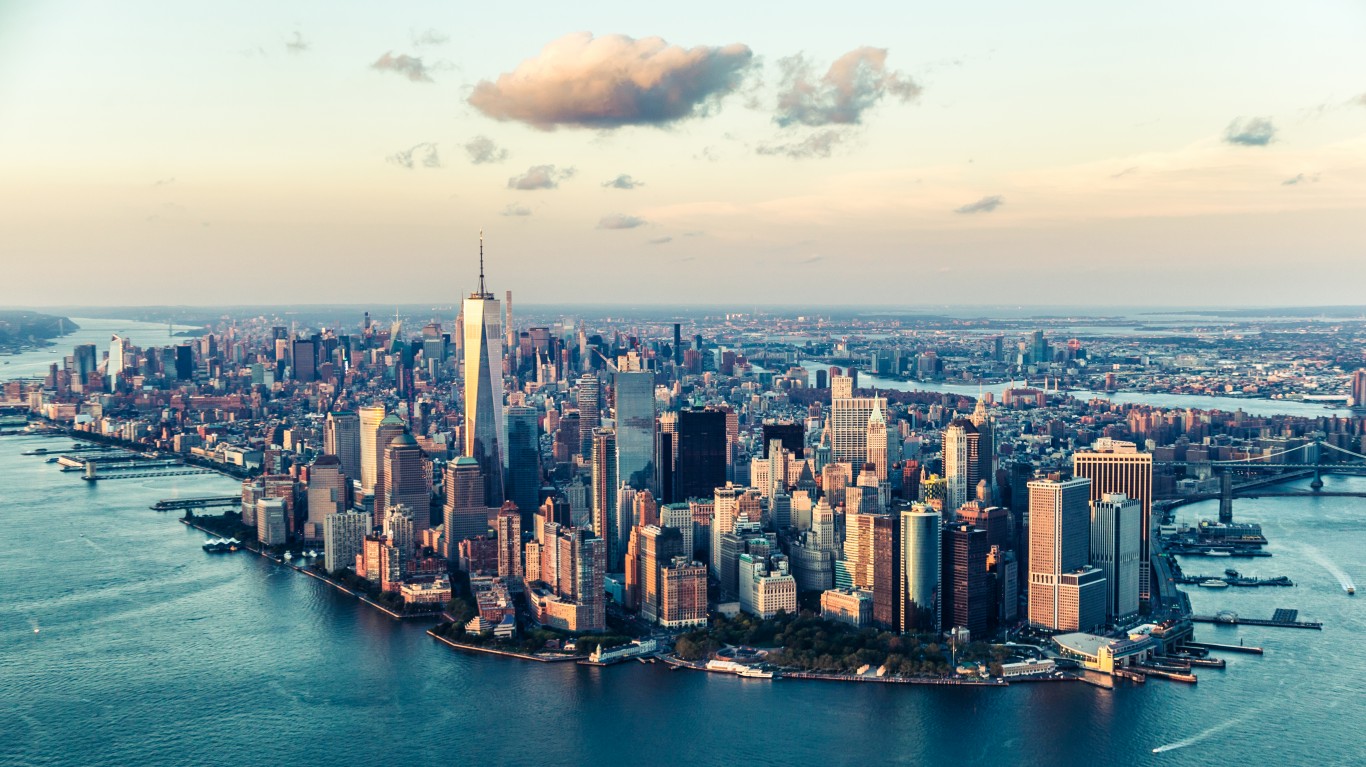

The National Oceanic and Atmospheric Administration (NOAA) of the U.S. Department of Commerce has posted its forecast for the Atlantic hurricane season. Compared to all other seasons it has tracked, its researchers predict there is a 60% chance activity will be higher than normal, a 30% chance it will be near normal and a 10% chance it will be below normal.
[in-text-ad]
The forecast is more specific than placing odds:
For 2021, a likely range of 13 to 20 named storms (winds of 39 mph or higher), of which 6 to 10 could become hurricanes (winds of 74 mph or higher), including 3 to 5 major hurricanes (category 3, 4 or 5; with winds of 111 mph or higher) is expected. NOAA provides these ranges with a 70% confidence. The Atlantic hurricane season extends from June 1 through November 30.
NOAA does not provide information on which parts of the United States will be hit the hardest, but another organization does. CoreLogic’s 2021 Hurricane Report, among other things, looks at storm surge and wind damage by area, both in terms of the number of homes affected and the dollar cost of the damage.
CoreLogic forecasts are based on those from NOAA. The latest forecast predicts that 31 million homes are at greater or moderate risk from damaging hurricane winds this season. Additionally, “Almost 8 million of these homes had direct or indirect coastal exposure and subsequent risk from coastal storm surge and damage from hurricanes.”
At the center of the CoreLogic forecast is a figure it calls “reconstruction cost value,” which is based on the cost to replace a structure that has been completely destroyed. This covers the cost of structures, but not the lots they sit on. The primary focus of the dollar amounts are single-family homes. The forecast covers the 15 metropolitan areas most at risk.
The New York City metro tops the list. A total of 781,823 single-family homes are at risk from a storm surge. Hurricane winds are a risk to 3,378,397 single-family homes there. Population concentration is one reason New York ranks in the top spot. The report says:
Population densities in these metro areas affect risk assessment. A lower category hurricane in a densely-populated metro area is likely to do much more damage than a higher category storm in a less-densely-populated area.
One historic example of how badly New York can be hit is Hurricane Sandy in 2012. Total damage from the storm was $70 billion.
These are the 15 metropolitan areas with the most hurricane risk:
| Metropolitan Area | Homes at Storm Surge Risk | Homes at Hurricane Wind Risk |
|---|---|---|
| New York City | 781,823 | 3,378,397 |
| Miami | 738,994 | 1,997,608 |
| Tampa | 544,433 | 1,102,691 |
| New Orleans | 396,870 | 424,460 |
| Virginia Beach | 395,653 | 578,622 |
| Fort Myers | 321,940 | 348,965 |
| Bradenton | 284,828 | 373,133 |
| Houston | 261,103 | 1,987,408 |
| Jacksonville | 220,301 | 548,161 |
| Naples | 197,265 | 201,314 |
| Charleston | 184,563 | 275,321 |
| Boston | 159,245 | 1,289,430 |
| Myrtle Beach | 156,161 | 247,907 |
| Lafayette | 146,254 | 179,528 |
| Baton Rouge | 136,951 | 299,849 |
Click here to read about the most powerful hurricanes of all time.
Take This Retirement Quiz To Get Matched With A Financial Advisor (Sponsored)
Take the quiz below to get matched with a financial advisor today.
Each advisor has been vetted by SmartAsset and is held to a fiduciary standard to act in your best interests.
Here’s how it works:
1. Answer SmartAsset advisor match quiz
2. Review your pre-screened matches at your leisure. Check out the
advisors’ profiles.
3. Speak with advisors at no cost to you. Have an introductory call on the phone or introduction in person and choose whom to work with in the future
Take the retirement quiz right here.
Thank you for reading! Have some feedback for us?
Contact the 24/7 Wall St. editorial team.



